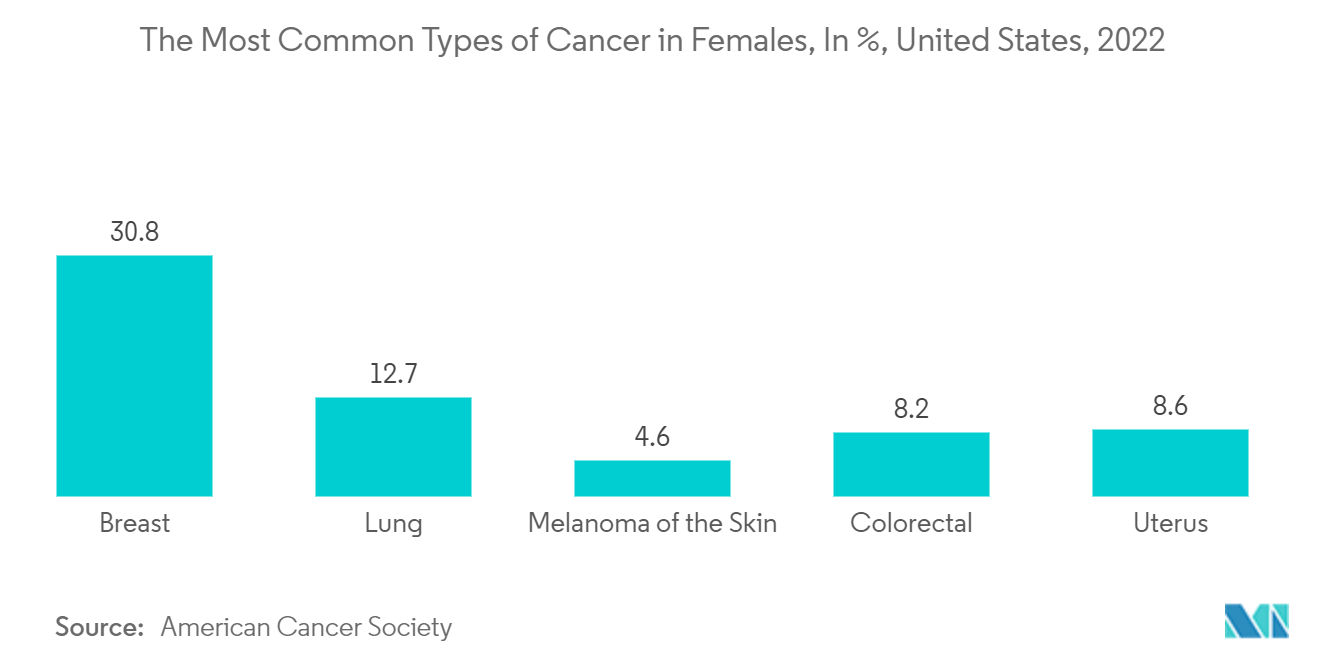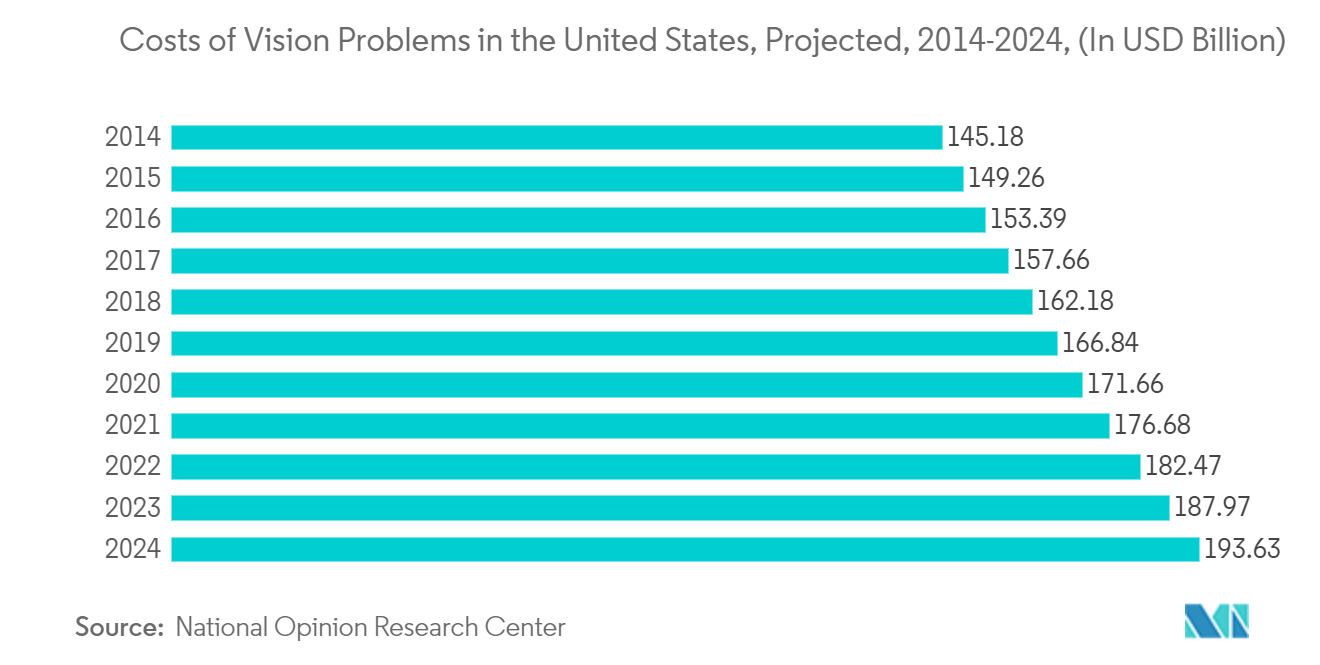Market Trends of North America Optical Imaging Industry
This section covers the major market trends shaping the North America Optical Imaging Market according to our research experts:
Optical Imaging in Oncology is Expected to Witness Significant Growth
- According to National Cancer Institute, the most common cancers in the United States (listed in descending order) are breast cancer, lung and bronchus cancer, prostate cancer, colon and rectum cancer, melanoma of the skin, bladder cancer, non-Hodgkin lymphoma, kidney and renal pelvis cancer, endometrial cancer, leukemia, pancreatic cancer, thyroid cancer, and liver cancer.
- Additionally, researchers at Purdue University in Indiana, North America, developed equipment that uses optical imaging to assist surgeons in better mapping out bodily malignancies and understanding how specific diseases affect brain activity. The light becomes greatly dispersed during fluorescence imaging, limiting the amount of information a surgeon can obtain. Purdue technology solves this problem. This technique gives surgeons more precise information about tumors and brain cell activity, which can enhance patient outcomes.
- Optical imaging is a fast, inexpensive, and sensitive imaging approach for the non-invasive detection of cancers. Defining the margins of cancerous tissue using optical contrast agents can allow the surgeon to distinguish between normal and tumor tissue better. It also allows surgeons to avoid the unintentional removal of healthy tissue and prevent failure to maximize the removal of malignant tissue.
- Moreover, head and neck cancers have become a significant threat to human health in recent years. While surgery remains the first-line treatment option for patients with head and neck cancer, the limited resectable tissue mass and complex anatomy structures in the head and neck region put surgeons in a predicament between extensive resection and a better quality of life for the patient, as removing too much may negatively impact the patient's quality of life, and pulling too little may cause cancer to reoccur.
- Early detection and treatment of pre-malignant lesions and real-time in vivo detection of surgical margins during en-bloc resection could reduce the resection of normal tissues. Developments in optical hardware and reagents have created exceptional prospects for real-time pre-malignancies and cancer imaging in the clinic or operating room, with an understanding of head and neck oncology.

Ophthalmology Segment is Expected to Hold a Significant Market Share
- The soaring popularity of Optical Coherence Tomography, a non-invasive imaging technology used to obtain high-resolution cross-sectional images of the retina, and the rising prevalence of eye disorders as the regional senior population grows, are expected to aid the growth of the market studied.
- Based on the data provided by the Centers for Disease Control and Prevention (CDC), in the United States, common eye disorders include refractive errors, glaucoma, age-related macular degeneration, diabetic retinopathy, and cataracts.
- Additionally, 3.3 million Americans have open-angle glaucoma, according to Prevent Blindness, a prominent volunteer eye health and safety organization devoted to preventing blindness and preserving sight. For instance, in October 2022, Nanoscope Technologies LLC, a biotechnology company working on gene therapies for the treatment of chronic diseases, announced that it had been awarded a USD 1.5 million SBIR Direct-to-Phase II grant from the NIH in support of its advancement of glaucoma therapy using engineered mechanosensitive channels (EMC).
- In addition, the ophthalmic industry is seeing an increase in the incorporation of AI into diagnostic techniques. Inspired by the human multilayered neuronal system, AI has significantly improved some visual and auditory recognition tasks. AI can comprehensively, quickly, and non-invasively examine digital data in various tasks.

